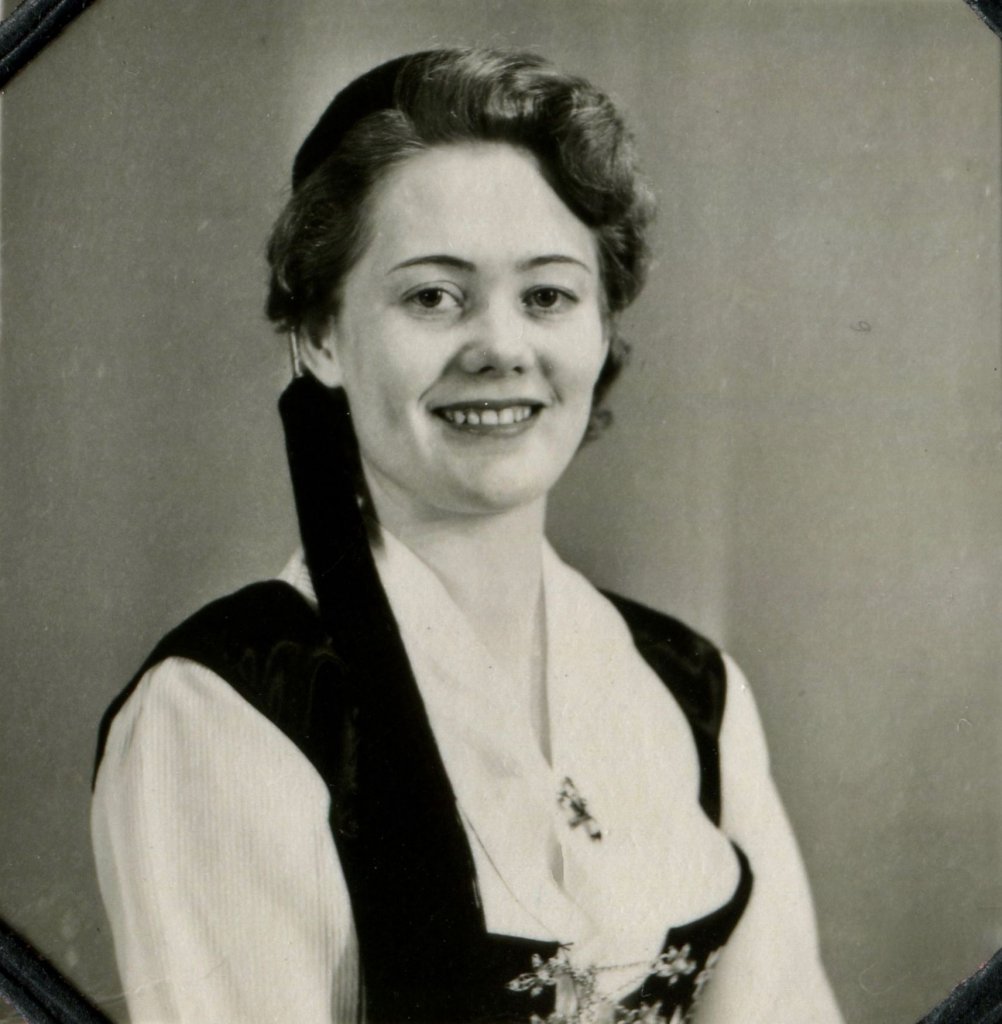
Solveig Arnórsdóttir (*1928)
No products found for vendor
Solveig Arnórsdóttir was born on May 25, 1928 in Reykjadal, S-Þingeyjarsýslu district. Her parents were Arnór Sigurjónsson, the first director of Alþýðuskóla school in Laugar, and Helga Kristjánsdóttir, who was a teacher at the same school. Solveig lived in Reykjadalur until she was 7 years old. The family then moved to Reykjavík, but Solveig still spend many a summer in the countryside, as many children did during that time, staying at her grandfather Sigurjón Friðjónsson's farm in Litli-Laugar, and Höfði in Mývatn later on.
Solveig attended Miðbæjarskólinn school in Reykjavík, Menntaskólinn in Akureyri, and the Women's College (Húsmæðraskóli) in Laugar 1946-1947, where her mother Helga was a board member. In the autumn of 1951, Solveig left for Sweden, where her oldest sister Steinunn lived with her husband.
In Stockholm, Solveig attended the renowned weaving college "Handarbetets Vänners Vävskola“, where she obtained a teaching degree in 1953. The years in Sweden were formative for the young woman from Iceland. It is here that she met some of her closest friends, fellow students Sigríður Halldórsdóttir, Astrid Axelsson, and Ingrid Matsson, and learned about the Swedish style of weaving. It was very different from weaving in Iceland at the time: In Laugar, students used to work with Icelandic wool yarns, like "kambgarn" from Álafoss and Gefjun, which has little in common with the soft kambgarn made of Merino wool we know today. There was also a difference in colour choices. In Iceland, darker and subdued hues were used, whereas in Sweden, bright and cheerful colours were popular. Solveig also learned how to work with linen (flaxseed) and "cottólin", a blend of cotton and linen.
Upon returning to Iceland, Solveig started working as a weaving teacher at the Women's College (Kvennaskólinn) in Blönduós. The school director was Hulda Stefánsdóttir at the time. At first, the Swedish influences regarding choice of colour and material were dominant in Solveig's work. Later on, Icelandic influences became more apparent. Solveig taught students how to prepare and set up a loom, find inspiration and tackle different types of projects, and work with different patterns of Swedish, Norwegian or Icelandic origin. She developed her own teaching materials, and very much enjoyed teaching at Kvennaskólinn.
While in Blönduós, Solveig met and married Halldór Hafstað, a farmer from Vík in Skagafirði. The couple eventually moved to newly built dairy farm Útvík in Skagafjörður. When Solveig stopped teaching in Blönduós, she also stopped weaving for the most part. She did, however, keep a loom in her house and wove a carpet runner from Álafoss yarn for Þingeyrarkirkju church in 1962-1963, upon the wish of Hulda Stefánsdóttir. Solveig also continued to work as an examiner for Kvennaskólinn and Húsmæðraskóla in Löngumýri, and taught handcrafts at Staðarhrepp and Sauðárkrókur elementary schools from 1970 until 1995.
During her Skagafjörður years, Solveig was socially and politically active. She was the head of the Skagafjörður Women's Association from 1983-1989, head of her district Staðarhreppur from 1988-1992, and a board member for several schools and societies. Both Solveig and Halldor also were members of the Skagafjörður forestry association.
The couple, who have four children, lived in Útvík until 1994, when their son Árni sonur took over the farm. Solveig and Halldór moved to Dýjabekk in 1993 and then Sauðárkrókur in 2019, where they still live.
